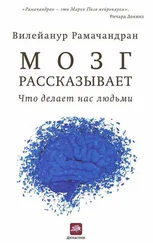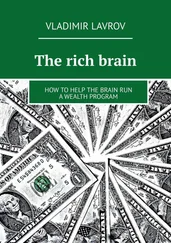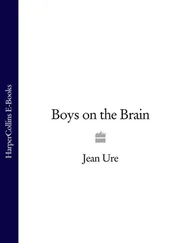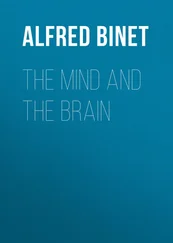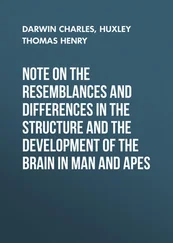Cappa, S., R. Sterzi, G. Vallar, and E. Bisiach. 1987. “Remission of Hemineglect and Anosognosia after Vestibular Stimulation.” Neuropsychologia , 25:755–782.
Chafe, W. 1987. “Humor as a Disabling Mechanism.” Am Behav Sci , 30:16–26.
Churchland, P.S. 1986. Neurophilosophy . Cambridge, MA: MIT Press.
Churchland, P.M. 1993. Matter and Consciousness . Cambridge, MA: MIT Press.
Churchland, P.M. 1996. The Engine of Reason, the Seat of the Soul . Cambridge, MA: MIT Press.
Churchland, P.S., V.S. Ramachandran, and T. Sejnowski. 1994. In C. Koch and J.L. Davis (eds.), A Critique of Pure Vision in Large Scale Neuronal Theories of the Brain . Cambridge, MA: MIT Press.
Clarke, S., L. Regli, R.C. Janzer, G. Assal, and N. de Tribolet. 1996. “Phantom Face: Conscious Correlate of Neural Reorganization after Removal of Primary Sensory Neurons.” Neuroreport , 7:2853–2857.
Cohen, L., S. Bandinell, T. Findlay, M. Hallet. 1991. “Motor Reorganization after Upper Limb Amputation in Man.” Brain , 114:615–627.
Cohen, M.S., S.M. Kosslyn, and H.C. Breiter. 1996. “Changes in Cortical Activity during Mental Rotation: A Mapping Study Using Functional MRI.” Brain , 119: 89–100.
Corballis, M. 1991. The Lopsided Ape . New York: Oxford University Press.
Corkin, S. 1968. “Acquisition of Motor Skill after Bilateral Medial Temporal Lobe Excision.” Neuropsychologia , 6:255–265.
Cowey, A., and P. Stoerig. 1991. “The Neurobiology of Blindsight.” Trends Neurosci , 29:65–80.
Cowey, A., and P. Stoerig. 1992. In D. Milner and M.D. Rugg (eds.), Reflections on Blindsight: The Neuropsychology of Consciousness . London: Academic Press, 11–37.
Crick, F.H.C. 1993. The Astonishing Hypothesis . New York: Charles Scribner.
Crick, F., and C. Koch. 1995. “Are We Aware of Neural Activity in Primary Visual Cortex?” Nature , 375:121–123.
Critchley, M. 1962. “Clinical Investigation of Disease of the Parietal Lobes of the Brain.” Med Clin North Am 46:837–857.
Critchley, M. 1966. The Parietal Lobes . New York: Hafner.
Cronholm, B. 1951. “Phantom Limbs in Amputees: A Study of Changes in the Integration of Centripetal Impulses with Special Reference to Referred Sensations.” Acta Psychiatr Neurol Scand , Suppl 72 :1–310.
Cutting, J. 1978. “Study of Anosognosia.” J Neurol Neurosurg Psychiatry , 41: 548–555.
Cytowic, R. 1989. Synaesthesia . Heidelberg: Springer Verlag.
Cytowic, R. 1995. The Neurological Side of Neuropsychology . Cambridge, MA: Bradford Books.
Daly, M., and M. Wilson. 1983. Sex, Evolution, and Behavior . Boston: Willard Grant.
Damasio, A. 1994. Descartes Error . New York: G.P. Putnam.
Damasio, A.R., H. Damasio, and G.W. Van Hoesen. 1982. “Prosopagnosia: Anatomic Basis and Behavioral Mechanisms.” Neurology , 32:331–341.
Damasio, A.R. 1985. “Prosopagnosia.” Trends Neurosci , 8:132–135.
Darwin, C. 1871. The Descent of Man . London : John Murray.
Dawkins, R. 1976. The Selfish Gene . New York: Oxford University Press.
Dehaene, S. 1997. The Number Sense . New York: Oxford University Press.
Dennett, D. 1991. Consciousness Explained . Boston: Little, Brown.
Dennett, D. 1995. Darwin’s Dangerous Idea . New York: Simon & Schuster.
DeWeerd, P., R. Gattass, R Desimone, and L.G. Ungerleider. 1995. “Responses of Cells in Monkey Visual Cortex During Perceptual Filling-in of an Artificial Scotoma.” Nature , 377:731–734.
Dewhurst, K., and A.W. Beard. 1970. “Sudden Religious Conversion in Temporal Lobe Epilepsy.” Br J Psychiatry , 117:497–507.
DeYoe, E.A., and D.C. Van Essen. 1985. “Segregation of Efferent Connections and Receptive Fields in Visual Area V2 of the Macaque.” Nature , 317:58–61.
Edelman, G.M. 1989. The Remembered Present . New York: Basic Books.
Eisley, L. 1958. Darwin’s Century . New York: Doubleday.
Ekman, P. 1975. Unmasking the Face: Guide to Recognizing Emotions from Facial Clues . Englewood Cliffs, NJ: Prentice-Hall.
Ekman, P. 1992. “Are There Basic Emotions?” Psychol Rev , 99:550–553.
Erdelyi, M. 1985. Psychoanalysis . New York: W.H. Freeman.
Farah, M.J. 1989. “The Neural Basis of Visual Imagery.” Trends Neurosci , 10: 395–399.
Farah, M. 1991. Visual Agnosia . Cambridge, MA: MIT Press.
Feinberg, T., and M. Farah. 1997. Behavioral Neurology and Neuropsychology . New York: McGraw-Hill.
Flanagan, O. 1991. The Science of the Mind . Cambridge, MA: Bradford Books.
Flor, H., T. Elbert, S. Knetch, C. Wienbruch, C. Pantev, N. Birbaumer, W. Larbig, and E. Taub. 1995. “Phantom Limb as a Perceptual Correlate of Cortical Reorganization Following Arm Amputation.” Nature , 375:482–484.
Florence, S.L., and J.H. Kaas. 1995. “Large-Scale Reorganization at Multiple Levels of the Somatosensory Pathway Follows Therapeutic Amputation of the Hand in Monkeys.” J Neurosci , 15:8083–8095.
Flor-Henry, P., L.T. Yeudall, Z.J. Koles, and B.G. Howarth. 1979. “Neuropsychological and Power Spectral EEG Investigations of the Obsessive-Compulsive Syndrome.” Biol Psychiatry , 14:99–130.
Fodor, J. 1983. Modularity of Mind . Cambridge, MA: MIT Press.
Frackowiak, R.S.J., K.J. Friston, and C. Frith. 1997. Human Brain Function . New York: Academic Press.
Freud, A. 1946. The Ego and the Mechanisms of Defense . New York: International Universities Press.
Freud, S. 1996. The Standard Edition of the Complete Works of Sigmund Freud , Vol. 1–23. London: Hogarth Press.
Fried, I., C. Wilson, K. MacDonald, and E. Behnke. 1998. “Electric Current Stimulates Laughter.” Nature , 391:850.
Friedman, H., T. Klein, and A. Friedman. 1996. Psychoneuroimmunology ; Stress and Infection . Boca Raton, FL: CRC Press.
Frith, C.D., and R.J. Dolan. 1997. “Abnormal Beliefs: Delusions and Memory.” Paper presented at the May 1997 Harvard Conference on Memory and Belief.
Fuster, J.M. 1980. The Prefrontal Cortex: Anatomy, Physiology, and Neurophysiology of the Frontal Lobe . New York: Raven Press.
Gabrieli, J.D.E., W. Milberg, M.M. Keane, and S. Corkin. 1990. “Intact Priming of Patterns Despite Impaired Memory.” Neuropsychologia , 28:417–428.
Gainotti, G. 1972. “Emotional Behavior and Hemispheric Side of Tension.” Cortex , 8:41–55.
Galin, D. 1974. “Implications for Psychiatry of Left and Right Cerebral Specialization.” Arch Gen Psychiatry , 31:572–583.
Galin, D. 1976. “Two Modes of Consciousness in the Two Halves of the Brain.” In P.R. Lee, R.E. Ornstein, and D. Galin (eds.), Symposium on Consciousness . New York: Viking Press.
Galin, D. 1992. “Theoretical Reflections of Awareness, Monitoring and Self in Relation to Anosognosia.” Consciousness Cognition , 1:152–162.
Gallen, C.C., D.F. Sobel, T. Waltz, M. Aung, B. Copeland, B.J. Schwartz, E.C. Hirschkoff, and F.E. Bloom. 1993. “Noninvasive Neuromagnetic Mapping of Somatosensory Cortex.” Neurosurgery , 33:260–268.
Gardner, H. 1993. In E. Perecman (ed.), Cognitive Processing in the Right Hemisphere . New York: Academic Press.
Gastaut, H. 1956. “Etude electroclinique des episodes psychotiques survenant en dehors de crises cliniques: chez les epileptiques.” Rev Neurol , 94:587–594.
Читать дальше


